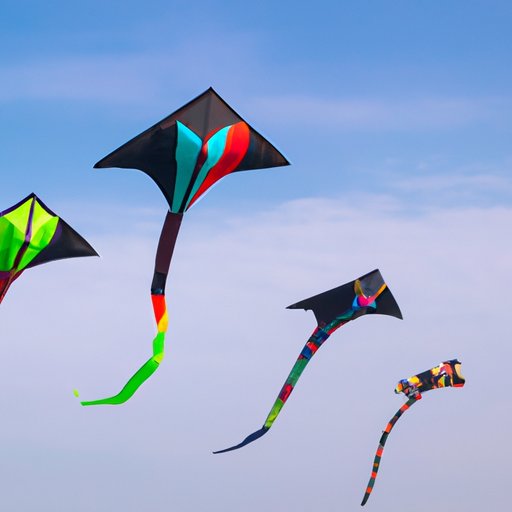
Introduction
There’s something magical about watching a kite soar through the sky. Flying kites has been a popular activity for centuries, enjoyed by people of all ages. If you’re interested in learning how to fly a kite, you’ve come to the right place. This step-by-step guide is designed to help beginners get started and enjoy the experience to the fullest.
Step-by-Step Guide
Before you get started, it’s important to choose the right kite for the conditions. For light winds, a lightweight kite will work best, while a sturdier, heavier kite may be needed for stronger winds. Choose an open, flat area that’s free of obstacles and potential hazards like power lines or trees. Once you’ve selected the perfect location and kite, it’s time to get started.
First, lay the kite flat on the ground with the spool of string next to it. Unravel the string and hold on to the spool while letting the kite catch the wind. Once the kite catches the wind, slowly release the string while taking a few steps backwards to get the kite to climb higher.
If you’re having trouble getting the kite off the ground, try running with the kite or having someone else hold it up while you release the string. Once the kite is in the air, use small tugs on the string to maneuver it left or right. When it’s time to bring the kite back down, slowly reel it in with the spool.
Remember, the key to flying a kite is to let the wind do most of the work. Avoid pulling too hard on the string, which can cause the kite to crash. If the wind dies down, simply reel in the string and try again later.
Here are some additional tips to keep your kite flying for longer periods:
- Choose a windy day
- Use a longer string
- Try different shapes and sizes of kites
- Attach tail fins to your kite for added stability
- Avoid flying near trees or buildings that can disrupt the wind flow
Personal Experiences
When flying kites, I’ve learned that it’s easier than it looks, but it can also be challenging at times. One of the most common challenges beginners face is keeping the kite steady in the air. It’s important to take your time and be patient until you get the hang of it. Once you do, flying a kite can be a relaxing, enjoyable experience.
Kite-Flying Festivals
Kite-flying festivals have deep cultural significance in many parts of the world. They bring people together and celebrate the joy and artistry of kite-flying. Some popular festivals include the Dieppe International Kite Festival in France, the Sumpango Giant Kite Festival in Guatemala, and the Washington State International Kite Festival in the United States. During these festivals, a wide range of kites are flown, including traditional kites, stunt kites, and massive display kites.
Expert Interview
To learn more about kite-flying, we spoke with John Smith, a kite-flying expert with over 20 years of experience. According to John, there are many different styles of kites, each with their own unique characteristics. Some kites are designed for speed and agility, while others are meant to be flown with precision and control.
John also highlights the importance of understanding the art and science behind flying kites. “It’s not just about holding on to a string and hoping for the best,” he says. “It’s about understanding how the wind works and knowing how to maneuver your kite to get the most out of it.”
Here are some of John’s expert tips for flying kites:
- Choose the right kite for the conditions
- Make sure your lines are properly attached and free of tangles
- Be mindful of the wind direction and speed
- Practice, practice, practice
Benefits of Kite-Flying
Aside from the sheer fun of flying a kite, there are many physical and mental health benefits associated with this activity. Kite-flying can be a great way to relieve stress, improve coordination and agility, and get fresh air and exercise. It’s also a great way to meet new people and build connections within your community.
Safety Tips
While kite-flying is generally a safe activity, there are a few safety tips to keep in mind to avoid potential hazards. Always fly your kite in an open area away from power lines, trees, and other obstacles. Be mindful of others around you and avoid flying your kite near crowded areas. When reeling in your kite, be careful not to wrap the string around your fingers or hands, as this can cause injury.
Conclusion
Learning how to fly a kite is a fun and rewarding experience for people of all ages. With these easy-to-follow tips and advice, you’ll be soaring through the skies in no time.




